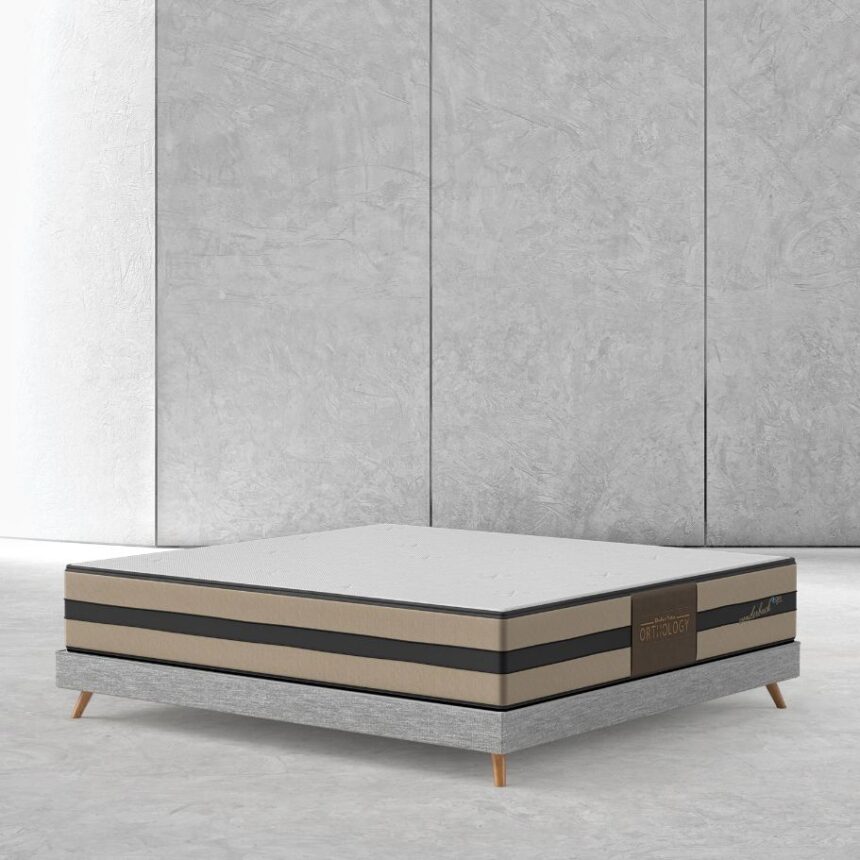Do you suffer from localized back pain? Did you know that the position you adopt at night can greatly influence these pains? Back pain means having to choose a suitable mattress as well as an appropriate sleeping position. Human beings spend a third of their life in bed! Fortunately, several solutions exist so that you can fully enjoy your moments of rest.
What Support Technology To No Longer Have Back Pain?
The support provided by the mattress can take several forms depending on the technology used:
Latex
Foam: polyether or polyurethane
Springs: biconical, multi-coil or pocket
Pocket springs are among the technologies that best support your body for sleeping and are therefore particularly suitable for people suffering from back pain. Indeed, they absorb pressure points, thus allowing better support. Latex mattresses come in second, especially when they are designed with several comfort zones: choose a model that has at least five!
Finally, keep in mind that if you have back pain, it is recommended to never opt for a polyether foam mattress. This type of mattress is made for extra beds and occasional sleeping. The polyurethane foam version often remains an entry-level mattress that is not recommended.
When you want to adopt a sleeping position against back pain, it is therefore important to take into account the build of the sleeper(s). Someone with an imposing frame will need a ortho mattress to support them than a small person.
The Importance Of Sleeping Independence
There is no point in adopting a sleeping position against back pain if you are bothered by the movements of your partner on the other side of the bed! The phenomenon will be all the more important if the person you share your life with is quite corpulent since the mattress will be sunk by the weight. This is where the notion of sleeping independence comes in: a mattress that ensures this independence allows the two people in the bed to toss and turn without disturbing their neighbor. If you are looking for the mattress that will soothe your nights, check that the model you are interested in benefits from this comfort. This will prevent you from being “sucked” towards the middle of the bed because of the sleeper next to you.
In this area, pocket spring mattresses offer the best performance. If the spring mattress keeps the old image of a mattress that bounces and where the slightest movements of one are felt by the other, this time is now over. Indeed, the pocket spring mattress offers both good support and sleeping independence.
Should You Choose A Memory Foam Mattress?
The memory foam part of a mattress is located in the upper layer. It is a technology that allows the mattress to adapt to your position. The foam is, in fact, heat-sensitive, that is to say that the heat of your body imprints your shape on it: you will thus be able to find your ideal position night after night. Memory foam is therefore able to adapt to any morphology. The operation of this type of mattress also offers a good distribution of support points, which makes it a mattress recommended for people wondering which mattress for back pain is the most suitable.
If you choose a sleeping position to combat back pain, you will find it easier to find it every night, and therefore to make sure to sleep in a good position every day. Because it is over time that back pain is relieved: your ortho mattress must support you in the long term and you must maintain the correct position every night. Therefore, consider changing your mattress every 10 years or so, including memory foam models, which end up losing their support and thermo-sensitivity capabilities as they age.
Sleeping Positions When You Have Back Pain
Back pain often affects the lumbar and cervical areas. Once you have chosen a medicated mattress that offers you good support in these specific areas, all you have to do is find the best sleeping position to combat back pain. But which position should you adopt? The answer is simple: you should sleep on your side, in the most natural fetal position. You still need to have a high-performance medicated mattress and an equally carefully chosen pillow. It is, in fact, important to fill the gap between the head and the mattress so that the cervical vertebrae are well aligned with the rest of the spine throughout the night.
If your lower back pain is particularly severe, you can also sleep on your back, placing a cushion under your knees to maintain the natural curve of the spine. You should also have a pillow under your neck for the same reason.
Finally, sleeping on your stomach is the most inadvisable position. If you cannot break this habit, you can alleviate the pain by placing a cushion under the pelvis. The goal is always the same: to maintain the natural alignment of the vertebrae as much as possible, and without forcing.







